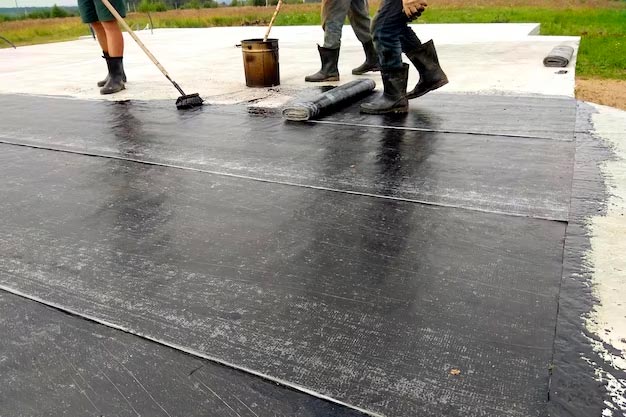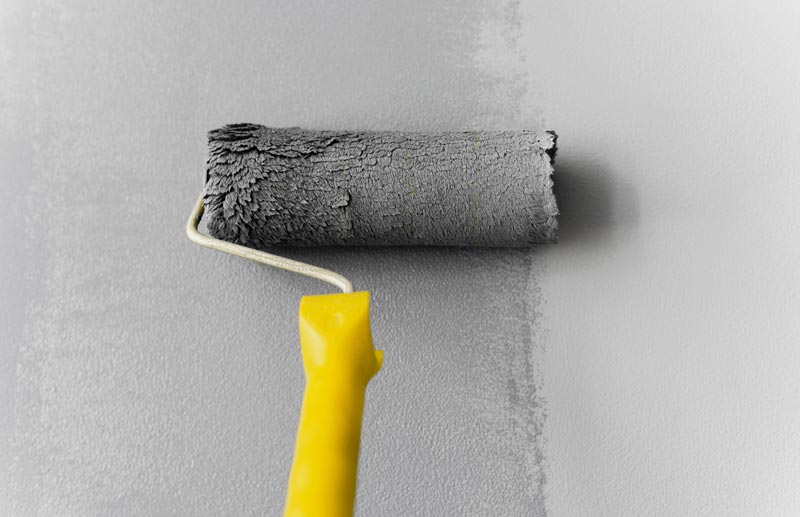- Free Estimates

Roll roofing is a popular choice for flat roofs due to its affordability and ease of installation. However, it is important to ensure the roll roofing is installed correctly to ensure its durability and longevity. In this blog, we will discuss the tips and tricks for an easy installation process of roll roofing.
Roll roofing is a type of roofing material made up of asphalt-saturated felt coated with granules. It is typically used for flat roofs and is a popular choice for homeowners due to its affordability and ease of installation. However, it is important to ensure the roll roofing is installed correctly to ensure its durability and longevity. This is why it is essential to seek the help of professional roofing contractors in Poughkeepsie, NY, especially if you are not comfortable performing the installation yourself.
Installing roll roofing can be a great way to protect your roof from the weather, but it’s important to know the best place to install it. Most often, roll roofing should be installed on flat or slightly sloped roofs with a pitch of no more than 2:12. It makes sense to only install roll roofing on horizontal surfaces and low slope areas, as these are the only locations where the material can lay straight and form a watertight seal.
When installing the material, ensure at least three inches overlap between each panel and use gravel or stone aggregate over your new installation to create natural drainage. Doing so will ensure that your roll roofing stays secured and waterproof for years.

Before beginning the installation process, gathering all the necessary materials is important. Here’s a checklist:
Please note that the materials list may vary depending on the type of roll roofing you choose and the specific requirements of your roof. Different roll roofing types are available, such as organic and fiberglass. Organic roll roofing is made from felt paper and is typically less expensive, while fiberglass roll roofing is made from a fiberglass mat and is more durable
It is always best to consult with a professional roofing contractor near you or to review the manufacturer’s instructions to ensure that you have all the necessary materials for the installation.
Before beginning the installation process, it is important to check the condition of the flat roof and make any necessary repairs. This will ensure that the roll roofing is applied to a clean and smooth surface. This will help ensure that the roll roofing is applied correctly and will last for its full lifespan.
The installation process of rolling roofing on a flat roof is relatively straightforward. The first step is to apply a layer of roofing cement to the flat roof. Next, the roll roofing is applied to the roof, starting at the lowest point and working upwards. It is important to ensure that there is a proper overlap of the drip edge, which is the roof’s edge hanging over the gutter. This overlap helps to ensure the overall durability and longevity of the roofing.
The installation process for roll roofing on a slightly sloped roof is similar to that of a flat roof. However, adding a layer of roofing cement along the eaves is necessary to create a watertight seal. Additionally, if the slope is greater than 2:12, it’s important to use additional materials such as roof sheathing and nails to create a more secure installation.
As the roll roofing is applied on either type of roofs, it is important to use roofing nails to secure it. The nails should be placed regularly along the edge of the roll roofing. After the roll roofing has been applied, a final layer of roofing cement should be applied to the surface to help seal any gaps or cracks.
A: The lifespan of roll roofing can vary depending on factors such as the quality of the material and the proper installation. On average, it can last anywhere from 5 to 10 years. However, it is also possible for it to last as long as 20 years with proper maintenance. It is always recommended to consult with professional roofing contractors in Poughkeepsie, NY, and to check the warranty offered by the manufacturer for more information on the expected lifespan of a specific product.
A: Roll roofing can be applied to steep roofs, but it may not be the most suitable option for this type of application. Roll roofing is typically used on low-sloped or flat roofs and is less flexible than other roofing materials. Thus, it may be more prone to cracking, splitting, or curling when applied to a steep roof.
It is recommended to consult with expert roofing contractors in Poughkeepsie, NY, to determine the best type of roofing material for your specific roof. They can help you decide what roofing option is best for your steep roof and can take into account your budget and other factors, such as the local weather conditions.
A: While homeowners can do a DIY roll roofing installation, it is recommended to seek the help of professional roofing contractors in Poughkeepsie, NY, to ensure that the installation is done correctly and to avoid any potential mistakes.
Roll roofing is a complex and labor-intensive process that requires a certain level of skill and experience, as it is crucial to the lifespan and effectiveness of the roofing material. Improper installation can lead to leaks, damage, and a reduced lifespan.
Before installing roll roofing, you should have a good understanding of the process and the tools required. You should also be comfortable working on a roof and aware of the safety hazards. It is also important to review the manufacturer’s instructions and to comply with local building codes.
If you need more clarification about the best way to install rolled roofing or if you’re not comfortable with the process, it is best to hire professional roofing contractors in Poughkeepsie, NY, to ensure that the job is done correctly. They will have the experience and knowledge to complete the installation quickly and safely, and they will also be able to provide a warranty on the work.

Roll roofing is a popular choice for flat roofs due to its affordability and ease of installation. However, it is important to ensure the roll roofing is installed correctly to ensure its durability and longevity. That’s why it is essential to seek the help of professional roofing contractors in Poughkeepsie, NY, such as the Roofing Contractor of Poughkeepsie.
Their team of experienced and certified roofers can help you choose the right roll roofing for your home and provide expert installation services. With their help, you can rest assured that your roll roofing will be installed correctly and properly to ensure its longevity.
Contact the Roofing Contractor of Poughkeepsie today to get started!
Copyright © 2022 Under Construction Roofing